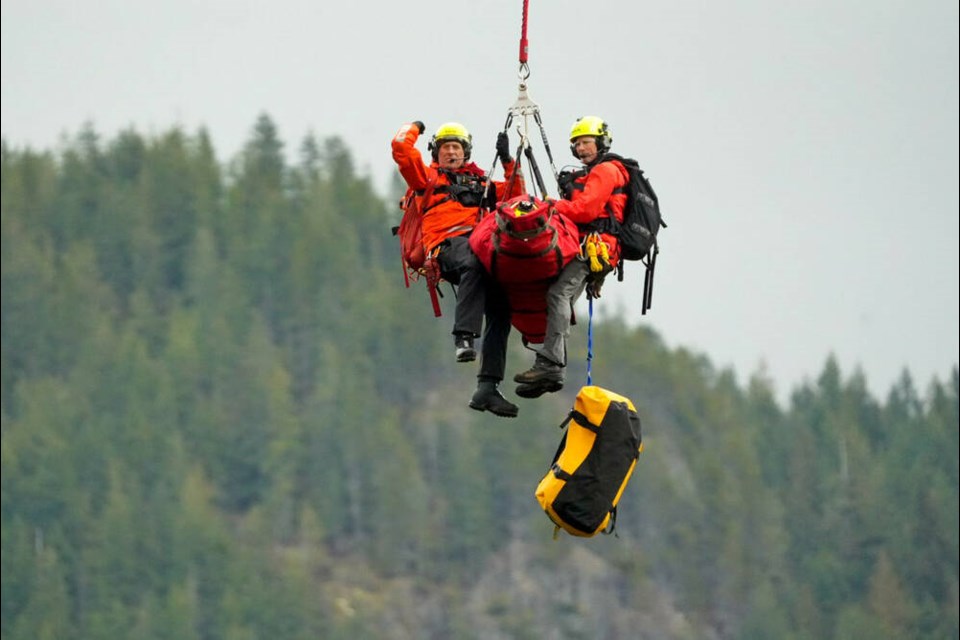While it might look like a carnival ride through the sky, North Shore Rescue’s longline is a piece of life-saving equipment that requires ongoing training and carries its own risks during deployment.
On Thursday, NSR members and Talon Helicopters pilots gathered for scheduled training with the Class D fixed line.
It’s been in the rescue organization’s toolkit for a long time, but in the last few years NSR has been focused on hoist training, along with night-vision training.
“But that machine is actually down for maintenance this month,” said team leader Mike Danks. “That means we’re primarily using the yellow A Star (helicopter) – so, fixed line operations.”
The longline system allows members to access difficult terrain easily, without exposing them to the hazards of getting to a site on foot. The line length varies from 150 to 300 feet, which means they could access a tight gully system in tall timber, for example. Another benefit of the fixed line system is the ability to carry up to 1,200 pounds. In comparison, the hoist can only have up to 600 pounds on its line. Five people can be brought in or out on the longline.
“It really provides the best patient care when someone is critically injured,” Danks said, adding that a man with a broken femur was longlined out of Christmas Gully on Mount Strachan, March 5.
On the flipside, fixed line operations don’t come without risks.
“There’s a number of variables that you have to consider,” he said. “There’s human pilot error, there’s mechanical error that can happen, there’s weather that can influence it.” Those machines also don’t have night vision technology, so fixed line is limited to daytime operation.
To minimize the risks involved, rescuer volunteers have a minimum number of training hours each year. Danks said his team exceeds the requirement, and his members train at least twice a year on the longline. Hoist training happens every two months.
“It’s a tremendous amount of time invested, and also financially as well,” he said.
Longline also differs from hoists in the type of communication involved. With longline, the rescuers clip to the line and the pilot does a lot of the work, whereas with hoist, the hoist operator guides the pilot as the helicopter gets close to the insertion point. There’s a specific pattern and workflow to go through during a hoist, because the ability to speak is limited, Danks said. A botched sequence can mean an aborted rescue.
“It certainly requires, I would say, a higher level of training,” he said.
Each system has strengths and weaknessness.
Hoisting takes the time pressure off to complete an operation in daylight, and you don’t have to land and prep the aircraft before an operation, as is the case with longline. You can locate the person from the helicopter, then hoist them straight down.
“But again, there’s pros and cons to both of them, because the load limit of the fixed line machine is far greater.”


